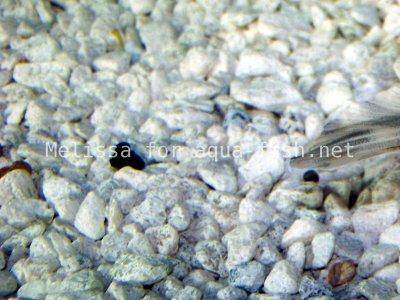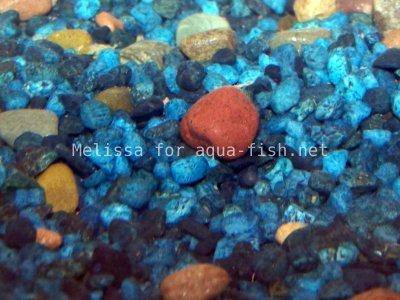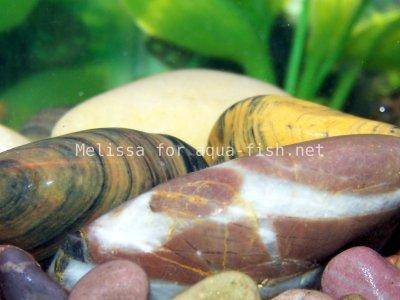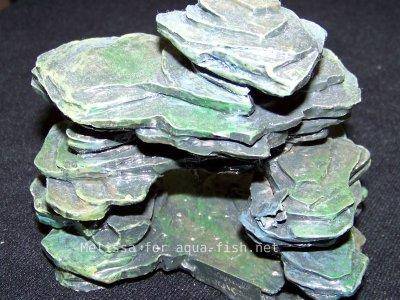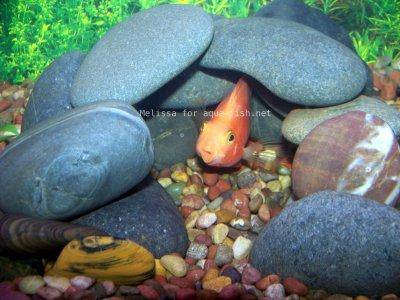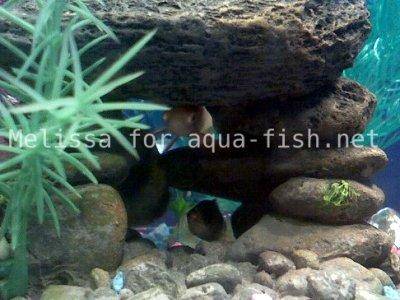The Benefits of Adding Rocks to Your Aquarium: Types, Pictures, and Where to Buy
Quick Links - Topics Covered
Brief Description
This article explores various types of rocks for aquariums and provides tips on how to use them to enhance your tank's appearance. At the bottom of this page, you’ll find a form where we encourage you to share your experiences with aquarium rocks, including the types you use, the fish species you keep, or any questions you might have. We’re here to help! Don’t miss our related page on Varieties of River Rocks for more insights. If you’re looking to buy aquarium rocks online, follow this link to find a list of trusted suppliers.
Introduction to Aquarium Rocks
Aquarium rocks serve a dual purpose in fish tanks, enhancing both their appearance and functionality. They provide essential features such as shelters, breeding areas, and grazing spots for fish, which contribute to a healthier and more vibrant aquatic environment. Selecting the right rocks is crucial to ensure the safety and well-being of your fish.
For rocks to be safe in an aquarium, they must be sturdy and not crumble, erode, or release harmful substances into the water. Safe choices include slate, granite, and quartz, which are generally safe for most fish. Conversely, rocks like lava rock and marble should be avoided. Lava rock has sharp edges that can injure fish, and marble can alter the water's chemistry, making it unsuitable for many species. To ensure rock safety, soak them in water for several weeks and test for any adverse effects on your tank.
Rocks in aquariums not only enhance the tank's aesthetics but also support fish health. Aquarium gravel, consisting of small rocks, covers the tank bottom to reduce reflections that could disorient fish and helps anchor plants. This substrate supports beneficial nitrifying bacteria and provides algae-eating fish with a habitat for algae growth. Gravel also offers hiding places for fry and adds to the tank's décor. Although gravel can be sourced from nature, it's safer to buy it from aquarium supply stores. Larger rocks can be used as well, but a layer of sand underneath is recommended to protect the tank bottom from potential damage.
Types of Aquarium Rocks
Several types of rocks are commonly used in aquariums, each offering distinct advantages:
- Live Rock: Ideal for marine tanks, live rock is covered with beneficial bacteria and marine life that enhance water quality.
- Slate Rock: With its flat surfaces, slate rock is perfect for creating layers and shelves within the aquarium.
- Dragon Stone: Known for its dramatic look, dragon stone adds a rugged, natural appearance to the tank and is popular in aquascaping.
- Basalt Rock: This dense, heavy volcanic rock provides stability and a natural look for both freshwater and saltwater tanks.
- Sandstone: Sandstone offers various textures and colors, making it a versatile option for visually appealing environments.
Benefits of Using Rocks in Aquariums
Incorporating rocks into your aquarium offers several benefits:
- Natural Aesthetics: Rocks enhance the visual appeal of the tank by creating a natural and attractive environment.
- Hiding Spots: Many fish and invertebrates use rocks for shelter, reducing stress and aggression.
- Territorial Boundaries: Rocks help define territories, which is beneficial for territorial species.
- Water Chemistry: Some rocks can influence the water chemistry, such as pH levels, which can be beneficial or detrimental depending on the species kept.
Coloured Gravel
Natural Gravel
River stones, shaped and polished by natural currents, are an excellent choice for aquarium decoration. They can be arranged to form natural caves, providing hiding spots for fish. Given their long exposure to water, river stones are generally safe for aquariums. Ensure they are free from chemicals or pesticides by testing them before use. To secure the stones and prevent collapses that could harm fish, use aquarium-safe silicone adhesive.
River Stones
Slate comes in flat slabs, making it ideal for creating layered caves and platforms in the aquarium. Slate's flat surfaces allow for the construction of sturdy shelters for larger fish and can also support plants and decorations. Always use aquarium-safe silicone sealant to secure these heavy materials and prevent accidents.
Live rock, often used in marine aquariums, is rich in marine life. Composed of ancient coral, it provides habitat for small organisms that enhance biological filtration and water quality. The cracks and crevices in live rock offer homes for these beneficial organisms.
Some aquatic plants come pre-attached to rocks for stability. These plants can grow without being anchored in substrate, as their roots are tied to rocks or logs. If the plants are anchored to lava rock, which can be harmful to fish, it's best to bury the lava rock in gravel to prevent injuries.
Synthetic rocks are available from aquarium retailers and online. Prices vary widely, starting at around $4.00 for small, basic designs and reaching up to $90.00 or more for larger, intricately detailed pieces. Synthetic rocks mimic natural rock formations and provide the same functional benefits without altering water chemistry.
- Slab Rock: A simple, flat piece of rock.
- Branch Rock: Designed to resemble branches or petrified wood.
- Reef Rock: Mimics the appearance of a natural reef with uneven dimples and holes.
- Tube Rock: Shaped like a hollowed-out lava tube.
- Cave Rock: Available as pre-made caves or puzzle-like pieces that can be assembled to create custom cave structures.
Synthetic Rock Cave
Synthetic rocks can also function as air-dispensing ornaments. These designs disguise the air pump while delivering essential oxygen to the water, combining functionality with aesthetics.
Including rocks in your aquarium setup enhances the natural look of the habitat, adds visual appeal, and creates defined areas within the tank. While fish can survive without rocks, an aquarium often feels incomplete without them.
Questions and Answers
As of March 23, 2011, we have incorporated the following questions and answers from aqua-fish.net/answers into this article. Feel free to submit your own questions if they are unique and not yet covered. We welcome new inquiries and are happy to assist!
-
Where can I find rocks for my aquarium?
Answer: Seeking recommendations from experienced aquarists is a good approach. River rocks are often preferred due to their varied shapes and sizes and are usually free of charge. However, we suggest using lake rocks, as they are generally safer. Ensure that the water source has fish to avoid potential toxins. Test the rocks for high calcium content by applying vinegar; if it bubbles, the rock has elevated calcium levels, suitable for African cichlids.
-
What types of rocks are suitable for use in an aquarium?
Answer: Most clean rocks can be used in an aquarium. Recommended options include granite, slate, volcanic glass, quartz, and Texas holey rock. These rocks are useful for creating caves and defining territories within your tank. Be cautious with local rocks that may show rust staining, as it can indicate harmful elements affecting the tank's pH balance. For more information on suitable rocks in your area, consult a local geologist or visit a natural history museum.
-
What types of stones are suitable for an aquarium?
Answer: Commonly used stones are those from local pet stores, but natural stones from other sources can also be suitable. However, be wary of certain natural stones, like sandstone, which may contain elements affecting water quality and pH levels. Rusting or staining can be a sign of potential problems. Always rinse stones thoroughly before adding them to the aquarium.
Online Suppliers of Aquarium Rocks
Due to ongoing changes with suppliers, many previous links may no longer work. As of 2024, we recommend using the DuckDuckGo search engine, particularly its shopping search feature, to find aquarium rocks.







